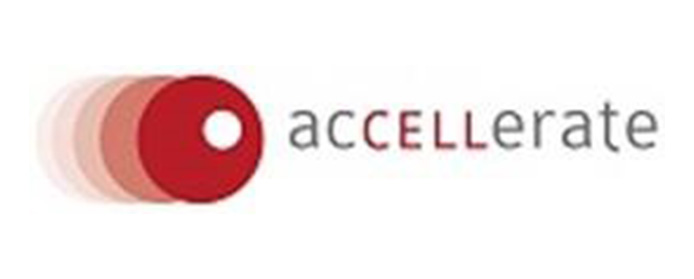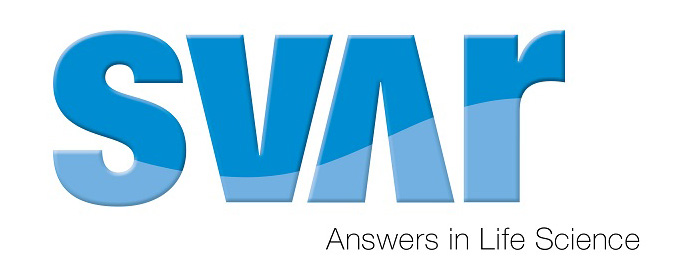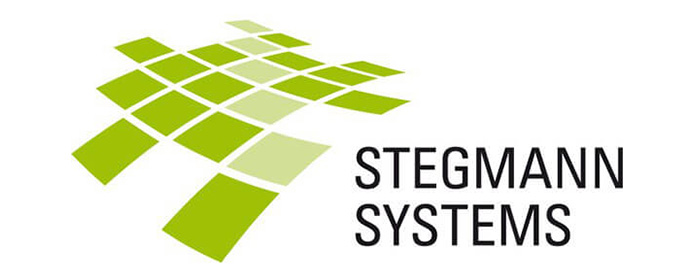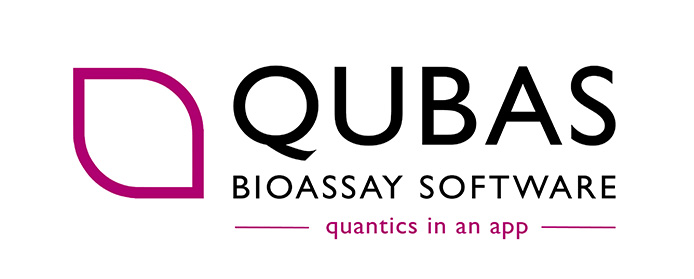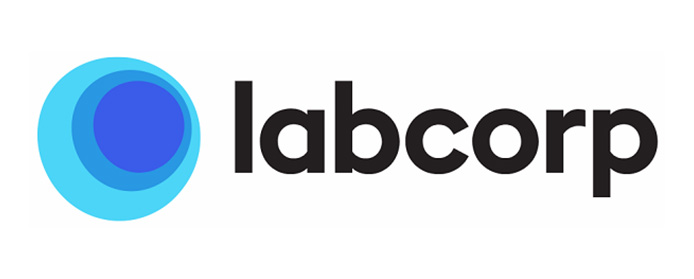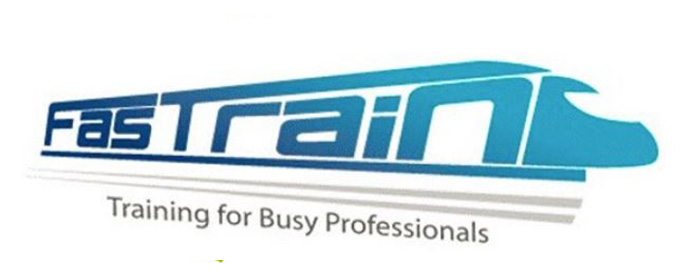BEBPA conferences include 3 days of presentations, workshops and round-table discussions on topics of current interest to the analytical biopharmaceutical community. It is hoped that these presentations and discussions will provide topics for future white paper working groups.
2024 Session Topics
- Life Cycle Assay Development
- Biosimilar Potency Assay Development
- Managing your Potency Assays in the Real World
- Reference Material
- Rapid-Fire Talks
2024 Workshops & Interest Groups
- Comparability – Challenges and Lessons Learned
- Data Analysis
- Handling Dose-Response Curves
2024 USB Speaker Abstracts
Title: Co-Validation and Technology Transfer of Cell-Based Potency Assay with Automation
Abstract: A transfer of a cell-based potency method can be challenging due to the difference between the labs and inherent complexities in procedures. To reduce the possibility of assay transfer failure, optimization is required. Automation was introduced to help remove human error and enable more reproducible and consistent results. To obviate automation unavailability a manual method along-side the automation method is needed, however this can make the transfer a complicated and challenging process. A detailed case study will be presented to illustrate a method equivalence and co-validation strategy to implement an optimized method with both manual and automated procedures at commercial QC lab.
Title: Cell-Based Bioassay Development With Operational Efficiency In Mind
Abstract: Prioritizing operational efficiency in method development eases the burden of future sample testing and reduces consumption of critical reagents. “Cell based bioassay development with operational efficiency in mind ” will discuss strategies for bioassay method development, including in silico evaluation of method formats, response curve optimization, and method performance trending.
Title: Establishing Strategies to Develop Potency Assays to Ensure Transferability during Clinical Development
Abstract: AAV gene therapy products are complex and assessment of their potency requires evaluation of multiple product attributes that reflect complexity of AAV biology and a transgene function. An analytical panel of assays is commonly used to address potency during clinical development. In a typically scenario a viral entry and transgene expression assays are used at the early stage and the functional mechanistic method is implemented during pivotal trial. Strategies and case studies for a successful potency assay implementation throughout products development and lifecycle management will be presented with an emphasis on the effective development, optimization and transferability from the pre-clinical to clinical stage.
Title: Challenges of Defining Potency for Gene Editing Therapeutics
Abstract: CRISPR-Cas9 gene editing technology has already proven to be an effective tool in the area of oncology and rare/orphan genetic diseases. The promise offered by these therapeutics is significant, however it poses challenges to all of those in the clinical space from manufacturing to direct care. It is necessary to develop and implement sensitive genomic assays to measure activity, quality, persistence, as well as potency during trials as well as long term follow-up requirements. In most cases this requires bespoke development across multiple platforms to effectively assess each parameter. We will discuss the approaches available to best answer these challenges.
Title: Rapid and Precise Potency Assays with Label-Free Laser Force Cytology
Abstract: The production of advanced therapies can be challenging and time-consuming due to the inadequacy of the current crop of legacy analytical tools. Analytical challenges in terms of speed, precision, reproducibility, and the need for highly trained operators result in delays, high costs and unacceptable variability. In this presentation, we will present an overview of LumaCyte’s platform technology and two case studies for gene and cell therapy potency assays using Laser Force Cytology. We show through data how this novel analytical technology can be used to drive improvements in CGT development and production assays and deliver significant enhancements in production quality, and product consistency and yields.
In gene therapy, the measurement of precise viral vector infectivity is of critical importance throughout bioproduction, but especially for a high-quality potency assay. Having a rapid and precise analytical tool for measuring viral titer is key to driving process improvement and improving product quality. We demonstrate effective high precision viral potency measurements through both relative and absolute potency assays with adenoviral vectors. We will also present Laser Force Cytology measurement of AAV transduction, label-free, and without a helper virus, to measure potency more closely to how it would be used in vivo. We show strong transduction prediction of unknowns based upon multivariate calibration with coefficient of variation of approximately 14%, over a multitude of samples and over an extended period.
For CAR T cell manufacturing, antitumor activity is linked to many cellular properties including activation, proliferation, inhibition, and exhaustion. The gold standard in potency has historically been a co-culture killing assay wherein a CAR T/M/NK cell is mixed with an appropriate antigen expressing tumor cell line. Due to the high complexity and low reproducibility of this assay, many have opted for a simpler potency measure such as interferon-gamma (INF-g) as a surrogate for target cytotoxicity assays. However, this has potential drawbacks as it is a marker for activation and cytotoxicity and provides only an indirect measure of actual killing capacity. In this presentation we show LFC as a simple and precise measurement tool for cell health/fitness of donor starting material, and co-culture killing assays with demonstrated comparability to a luciferase assay.
Title: Development and Characterization of Anti-CD19 CAR-T Lentiviral Vector Integration Copy Number Candidate Reference Material
Abstract: Lentiviral vectors (LV) are emerging as powerful tools for stable gene delivery for both cell and gene therapies. The US Food and Drug Administration (FDA) recommends that the integrated lentiviral vector copy number (VCN) shall be less than 5 copies, since the high copies of uncontrolled integration can be the safety concerns of insertional mutagenesis and oncogenesis. Current VCN measurement methods including quantitative real-time PCR (qPCR), digital PCR (dPCR), and Next Generation Sequencing (NGS) have their limitations mainly because of the different design of the assays from different laboratories. Therefore, reference materials for VCN measurements can be critical for harmonizing the measurements and increase the confidence of the measurement results. We developed 4 stable anti-CD19 CAR-T VCN cell lines, each of them contains 1, 2, 3, or 4 copies of integrated lentivirus vector. The genomic DNA of each cell line was confirmed by droplet digital PCR (ddPCR) with 5 different assays. The cell lines were further characterized for stability and cytotoxicity. We found that these anti-CD19 CAR-T VCN cell lines were stable after extensive passages. The cell lines also showed cytotoxicity to the CD19 expressing tumor cells (Raji cells, ATCC). In conclusion, we have developed a set of cell lines that can serve as VCN reference materials and CAR-T cell potency assay references.
Title: Phase-Appropriate Potency Assay Development Strategies for Gene Therapy Products
Abstract: AAV-based gene therapies require complex analytical methods to assess key quality attributes during process development, GMP release, and stability monitoring of clinical-grade products. Here we discuss phase-appropriate paradigms for analytical method development, qualification, and implementation into gene therapy programs as they transition from research into clinical stages. A case study will be used as an example to discuss the strategies and challenges of the development and qualification of a functional potency assay used to support the release of a gene therapy product. This therapy is based on the delivery of a gene that encodes an enzyme that treats the underlying disease of interest. To assess the quality of the AAV-drug substance (DS) and drug product (DP), target cells are transduced with the AAV DS/DP at different multiplicities of infection (MOIs), ranging from 3×104 – 2×106 vector genome per cell and assessed for both mRNA expression and functional potency of the transgene that comprises the AAV product. The functional potency assay for this product measures an increase in a specific amino acid in response to enzyme encoding gene expression which is detected by mass spectrometry. The relevance of this functional potency method to the disease indication is based on an understanding that the quantity of the amino acid is directly correlated to the potency of the AAV material. The accuracy of the method was within 75 -125% and precision of the method was < 10% indicating that the method is capable of generating a quantitative result and of detecting samples of varying potency over a wide range of doses. The collective information from the method qualification suggests that the cell-based bioassay is suitable for the release of the gene therapy product and that it can be used in a quality control laboratory for batch release. We believe this method could serve as a platform for other enzyme replacement therapies.
Contributing Authors: Arkadi Manukyan, Ying Xu, Timothy He, Alex Wong, Michael Grinnell, Sonia Connaughton, Susan Rutberg, Marla Abodeely, Claire Davies Analytical Development Department, Genomic Medicine Units, Sanofi, Framingham, MA 01701, USA
Title: Considerations for Potency Evaluation in Connection with Biotherapeutic Product Enhancements
Abstract: Product enhancements are considered when improvements can be made in a commercialized therapeutic. Examples of these can be a change in product concentration, formulation, and/or product presentation. In the course of product enhancements for one of Amgen’s bispecific T cell engager (BiTE®) molecules, a formulation change was made to minimize levels of a critical quality attribute. When potency was assessed for product in the original formulation compared to product in the new formulation, a difference was observed. Further studies revealed that small changes in the level of a critical quality attribute had an impact to potency as measured by the bioassay. This presentation will describe those studies.
Title: Engineering a Novel ILT3 Chimera Cell Line Enables the Development of a Functional Cell-Based Potency Assay
Abstract: LILBR4/ILT-3 is an inhibitory member of the immunoglobulin-like transcript family of cell surface receptors. After ligand binding, ILT3 signals via multiple immunoreceptor tyrosine-based inhibitory motifs (ITIMs) to negatively regulate immune cell activation and promote an immunosuppressive tumor microenvironment (TME) and a tolerogenic phenotype. An immunotherapy that binds to ILT3 can block the ligand-ILT3 interaction, thus reversing the inhibitory signal cascade and the immunosuppressive TME leading to better patient outcomes. Since 2018 multiple ligands for ILT3 have been identified providing some clarity to its poorly understood mechanism of action (MoA). This work demonstrates how to overcome the challenge of developing a MoA reflective cell-based potency assay (CBA) without a clear understanding of the MoA.
Initially multiple ligands described in the literature were screened for inhibitory activity in a traditional reporter gene CBA with cells overexpressing ILT3. However, the addition of an anti-ILT3 drug was never able to recover the luminescence signal suppressed by the ILT3-ligand interaction. As an alternative approach, a novel chimeric receptor reporter cell line was designed and engineered that inverted ILT3 from an inhibitory to an activation motif, ITIM to ITAM. T cells were triple engineered with a custom ILT3-ITAM chimera gene, an activation signaling protein, and a luciferase reporter gene. Upon binding between ILT3 and its ligand, T cells are activated and express luciferase resulting in luminescent signal. When anti-ITL3 drug binds to ILT3, the luciferase expression and thus luminescence signal is inhibited. Multiple potential ILT3 ligands were screened to determine which bound to ILT3 and induced the highest T cell activation in the chimera cell line. Next, a suite of assay parameters was optimized to generate a robust and simplified potency method suitable for a quality control testing laboratory. This innovative approach enabled the generation of a CBA that reflected anti-ILT3 drug disruption of ligand interaction and was sensitive to anti-ILT3 drug stability stresses.
Contributing Authors:
Julie C. McIntosh1, Asra Mirza1, Jianying Su1, Amanda Chan1*, Junming Yie1^, Bo Feng1, Kevin Gurney1, Anka G. Ehrhardt1
1Merck &Co., Inc., Rahway, NJ, USA
*Current Affiliation: Massachusetts Institute of Technology, Department of Biological Engineering, Cambridge, MA, USA
^Current Affiliation: Ark Biosciences, Shanghai, China
Title: Development of a MoA-based Bioassay Platform for Safe and Rapid Assessment of Viral Entry Inhibitors
Abstract: Entry inhibitors, including neutralizing monoclonal antibodies (NMAbs), have proven safe and effective countermeasures for endemic and emerging viruses. Although a wide variety of assays exist for assessing viral entry inhibitors, each of these methods has distinct drawbacks. Assays utilizing replication-competent viruses (e.g., PRNTs) remain the gold standard for measuring virus neutralization but are characteristically laborious, low-throughput, and require high-containment facilities for many pathogenic viruses. Cell-free surrogate assays using purified proteins (e.g., sVNTs) eliminate the biosafety concerns of PRNTs but are restricted to inhibitors that disrupt receptor-binding. In contrast, pseudovirus assays can capture diverse mechanisms-of-action for viral entry inhibitors under BSL-2 conditions. However, these assays suffer from relatively long turnaround times (TATs) and high variability. To overcome these limitations of traditional neutralization assays, we developed a safe, rapid, and robust bioassay platform employing HiBiT-tagged pseudovirus-like particles (HiBiT-PsVLPs). These HiBiT-PsVLPs are non-replicating, lack viral nucleic acids, and can incorporate entry proteins from highly pathogenic viruses to recapitulate viral entry and neutralization under BSL-1 conditions. Entry of HiBiT-PsVLPs into LgBiT-expressing target cells results in protein complementation to form NanoBiT luciferase, yielding a rapid luminescent signal with reduced TATs compared to traditional pseudoviruses. As an initial proof-of-concept, we generated HiBiT-PsVLPs bearing the ancestral SARS-CoV-2 Spike protein. These HiBiT-PsVLPs entered target cells via authentic SARS-CoV-2 entry pathways and were neutralized specifically by NMAbs targeting Spike. Neutralization of SARS-CoV-2 HiBiT-PsVLPs was highly reproducible and reflective of NMAb stability and potency, demonstrating suitability of this assay for QC lot release. As immune escape has proven a major challenge for NMAbs targeting SARS-CoV-2, we explored the application of HiBiT-PsVLPs towards developing broadly active, pan-coronavirus entry inhibitors. We generated HiBiT-PsVLPs bearing Spike proteins from SARS-CoV-2 variants or related betacoronaviruses and observed varying sensitivities of these HiBiT-PsVLPs to NMAbs, consistent with published results. We further extended this flexible platform technology to HIV and several emerging viruses, including avian influenza, Ebola, Marburg, Lassa, and Nipah. In each case, we observed potent and specific neutralization of HiBiT-PsVLPs by NMAbs and other entry inhibitors. Combined, these studies illustrate the potential for HiBiT-PsVLPs to facilitate discovery and development of viral entry inhibitors targeting a wide variety of endemic and emerging viruses.
Contributing Authors: Jonathan Mitchell1, Vincent Mastrodomenico1, Jim Hartnett1, Denise Garvin1, Mei Cong1, and Jamison Grailer1 1Promega Corporation, Madison, WI, USA
Title: Impact of Product Variants on Product Functional Activity and Stability in the Content of Biosimilars
Abstract: A potency or potency-indicating assay is a regulatory requirement for the release of every lot of a bio-therapeutics. Potency is a critical quality attribute that is also monitored as a stability indicator of a bio-therapeutics. In the absence of full product understanding the biologics world is still bound by the concept of “the process define the product”. For complex biologics, manufacturing process may be optimized to yield what is believed to be an active ingredient, but a company may end up, sometime unknowingly, with reduced activity due to removal of key component. This is where meaningful assay (Potency) play such an important role. Changes in potency can occur through a variety of physicochemical or structural changes. A meaningful and reliable assay is probably the most important tool in drug development.
Title: Connecting the Dots: Primary and Working Reference Standards for Allogeneic CAR T Cells
Abstract: The strategies for design and use of potency assays for Cell and Gene Therapeutics is a developing story. Originally most of these assays were based upon ‘absolute’ potency. More recently, they have begun to transition to ‘relative’ potency. That shift to relative potency assays is associated with the concurrent need for a reference standard. While the desire and intention are to adopt a classical Primary & Working Reference Standard approach, the support of a cellular allogenic CAR-T therapeutic brings with it unique challenges, including donor-to-donor variability, limited lots sizes, and more. We will discuss a possible solution we have undertaken to address these challenges.
Title: Navigating mAb Reference Standard and Bridging Strategy for Orthogonal Potency Assays
Abstract: Reference standards are key elements in a control strategy as they ensure continuity of product quality, stability, comparability from early development to commercial stages. From interim reference standard to primary reference standard, this material plays a critical role in establishing bioactivity, purity, and identity, as well as monitoring the product quality and method performance of biopharmaceuticals. Following a defined strategy /established best practices for maintenance of reference standards throughout a product’s lifecycle is expected by health authorities. We present a case study for strategy development and the bridging of reference standards in 3 different potency assays (ADCC, ELISA antigen binding assay, superior ELISA antigen binding assay) for commercial readiness.
Title: Development of a New High Throughput Quantitative Potency Assay for a CD19 Chimeric Antigen Receptor T Cell Therapy
Abstract: Potency is a critical quality attribute that must be tested prior to the release of any drug product (DP) for clinical use. Autolus’ AUTO1 (obecabtagene autoleucel, obe-cel) DP is an autologous CD19 chimeric antigen receptor (CAR) T cell therapy for treatment of adult relapsed or refractory (r/r) B cell acute lymphoblastic leukaemia (B-ALL). The prognosis for adults with r/r B-ALL remains poor with traditional chemotherapy, hence the urgent need for new treatment options. An initial quantitative flow cytometry-based potency procedure that measures target cell killing by AUTO1 DP was developed and phase appropriately validated in Quality Control. Although scientifically sound, during routine execution of the procedure, Quality Control operators reported challenges regarding long-term culturing of target cells, extensive hands-on time, and subjective flow cytometric gating, which reduced operational efficiency and required extensive operator training. In addition, the procedure lacked robustness, which at times delayed the release of patient DP batches. Hence, there was need for a new, robust potency procedure with the same readout. In response to such challenges, Autolus’ Analytical Development team developed a new procedure for measuring AUTO1 DP potency which the Quality Control team were able to successfully validate. The new procedure leverages Agilent Biotechnologies’ xCELLigence technology, which uses cellular impedance to measure the effect of AUTO1 DP on target RAJI cells. By monitoring changes in cellular impedance, reflected in the “cell index”, this procedure quantifies AUTO1 DP-mediated killing of RAJI cells, and subsequently converts these readings into a percentage killing. The new cellular impedance-based procedure addresses all the challenges encountered in the flow cytometry-based procedure execution and has been successfully validated and analysed for robustness. Our presentation will describe the newly validated cellular impedance-based procedure’s ability to provide a reliable, quantitative potency readout, significantly enhancing the operational efficiency and robustness of potency testing for AUTO1 DP.
Contributing Authors: Louise Webb1, Michelle Fung1, Sneha Chitre1, Michael Cocozza2, Greg Wood2, Jakub Dragun2, Siddhartha K Bhaumik1, Michael Merges3 1 Analytical Development,2 Quality Control, 3 Process Development – Autolus Therapeutics, London, UK
Title: Re-Development and Qualification of a Cell-Based Potency Assay from Cultured Cells to Ready-to-Use Cells for Greatly Improved Assay Performance
Abstract: The complexity of a cell-based potency assay comes in part from the fact that they depend on a consistent source of cells to minimize variability of the response. Traditionally, cells are cultured in flasks and used for assays over multiple cell passages. M-NFS60 cells are murine cells with lymphoblast morphology and their growth depends on the presence of IL3. For a M-NFS60 cell proliferation assay, IL3 is removed from the cell medium which leads to decreased or stopped cell proliferation. On this minimal cell proliferation background, a serial dilution of a growth factor drug can be tested to obtain a dose-response curve. It is possible and has been reported that over extended cell passages, M-NFS60 cells can reach IL-3 independence which increases the background of the potency assay. This presentation covers the method and challenges faced during the re-development of a cell-based potency assay focusing on the replacement of the use of “Cultured Cells” (CC) to the “Ready-to-Use” (RtU) method. The use of RtU cells has many advantages over CCs including consistency of cell passages and performance, fewer consumables, and is more user friendly. But the incorporation of RtUs for cell-based potency assays also comes with challenges during initial development. Challenges that will be discussed in the presentation include cell banking conditions such as type of freezing medium, freezing cell concentration and considerations for cell bank qualification to prepare for transfer to a QC environment. This talk also discusses the improved assay performance with RtU cells compared to the original CC method and will elaborate on the qualification in the Development laboratory and transfer of the improved assay to the QC laboratory.
Title: Define Critical Parameters of Bioassays to Gain a Better Understanding of Biochemical Basis of Different Bioassay Platforms to Inform Biosimilar Development
Abstract: Bioassay is one of the critical attributes for biosimilar development. Therefore, data consistency and reproducibility from bioassay are of great importance. Failure to establish a reliable bioassay is a hurdle to biosimilar development. We compared different bioassay methods used to measure proliferation inhibition and ADCC activities of trastuzumab and its biosimilars and identify critical assay parameters, including different assay platforms, target cell lines, effector cells (PBMC vs. NK cells) preparation, and co-culture incubation time. We found that the selection of target cells and the methods to prepare effector cells significantly affect bioassay performance, including assay consistency and reproducibility.
Workshop & Interest Group Abstracts
Title: Comparability – Challenges and Lessons Learned.
Abstract: Demonstrating comparability of biopharmaceutical processes after a change is a critical regulatory requirement, but it can be challenging. This session will provide key lessons in study design, statistical analyses, and reporting learned from decades of experience. Introduction: Complex biopharmaceutical processes often require changes or improvements, but manufacturers must demonstrate to regulatory agencies that these changes will not impact the safety, identity, strength, safety, or quality characteristics of the drug. Challenges: One of the major challenges in demonstrating comparability is designing a study that is sufficiently sensitive to detect any meaningful differences between the pre- and post-change processes. Another challenge is selecting the appropriate statistical methods for analyzing the data. Finally, the comparability report must be clear, concise, and persuasive, demonstrating to regulators that the changes have not had a negative impact on the product. Lessons Learned: This session will provide case studies to illustrate key points in study design, statistical analyses, and reporting. Case studies will be used to demonstrate when to use different statistical methods for demonstrating comparability, such as equivalence testing and similarity testing. Conclusion: By attending this session, participants will learn how to design, analyze, and report comparability studies in a way that meets regulatory requirements and reduces the risk of delays in product approval.
Talk: Limiting potency bias from allowed non-similarity while protecting the similarity pass rate
Abstract: Protecting bioassay-based estimates of relative potency against bias (due to allowed non-similarity) and against unacceptably high similarity failure rates, while allowing for changes in assay capability (precision) appears to be impractical. While power calculations for both detecting non-similarity (via difference tests) and for passing similar samples (via equivalence tests) are particularly helpful, these calculations are not simple. This presentation will illustrate some tools for these calculations and how they support modifying similarity criteria based on data from bioassay.
Title: All You Ever Wanted to Know About Target Measurement Uncertainty and Total Analytical Error for Analytical Validation
Abstract: For decades, analytical validation in the pharmaceutical environment has been developed in order to demonstrate that an assay or bioassay shows good performances in terms of linearity, accuracy and precision. Nowadays, most people realize that the real interest is to demonstrate that the results provided by the laboratory are of sufficient quality. We have seen numerous presentations, showing that having an acceptable accuracy and an acceptable precision could still lead to results of inappropriate quality. Now, with ICH Q2(R2) opening the floor to the “combined accuracy and intermediate precision” — what the world already embraced long ago as “Total Analytical Error” — the topic of expressing properly the link between measurement uncertainty and result’s quality for method validation is paramount again. In this talk, we will summarize how the Target Measurement Uncertainty (TMU) is a key concept embracing bias, precision, and their uncertainties, for any concentration level in the working range. It will be reviewed how TMU can be identified from the product / intermediate acceptance limits (Quality Target Product Profile – QTPP) , to write a proper Analytical Target Profile (ATP). Finally, we will see how the TMU and QTPP can be used to identify indecision zones, when a measurement is too close to a specification, and how replication and assay knowledge (e.g. the Maximal Measurement Uncertainty – MMU) can help having these indecision zones as small as possible to ensure the measurement’s quality is always fit for purpose.
Title: Basics of How We Calculate Relative Potency
Abstract: The relative potency calculation is often based upon a ratio of the ED50 of the test article to the reference material. However, there is a step-wise approach which goes into preparing the data set for this calculation. This workshop covers the basic calculation, the data requirements for similarity and provides a discussion of confidence intervals and how they are used in today’s potency world. This is a great workshop to attend if you are not a statistician, but want to sit in on the statistical interest group later in the conference. It will provide you basic understanding so you can be part of the discussion!
Title: Using Equivalence Testing to Define Lot Release Limits for Product Potency
Abstract: Potency is a critical quality attribute for all biologics. The impact of process variability on potency levels can include changes in the safety or efficacy of the product. The ability to discriminate potency levels across product lots is dependent on the chosen release limits and the measurement uncertainty associated with the reported value. Because potency is typically a relative measure with 100% being an assigned target, the goal of QC testing early on is to confirm equivalence of individual batches to the intended target. This strategy supports the expectation that minimum effective dose and maximum tolerated dose estimates are derived from pre-clinical and clinical studies using product batches with relatively consistent potency. At licensure, the manufacturing process and the test method must be operating in a state of control such that batches will routinely be similar enough to the 100% target to be considered safe and effective. This can be accomplished by establishing a specification using a formal statistical hypothesis framework and reducing analytical error during the development process. This presentation will cover the rationale for choosing an equivalence-based approach over a difference test and will include an example analysis.
Title: Partial Dose-Response Curves – Contributions To The Discussion On “Allowed” Non-Similarity In Biological Assays
Abstract: Is some non-similarity of dose-response curves acceptable if the calculated relative potency shows no sensitivity to it? What happens if updated equivalence margins for your system and sample suitability criteria are required to reflect this “allowed” non-similarity? In the talk simulation studies are presented which help understanding the impact and risks of the approach.
Title: Replicates: Should They Be Averaged Before Modelling?
Abstract: When assays involve pseudo-replication, the response values for the dose replicates will be related. However, the statistical analysis of such assays often ignores this relationship and instead treats the replicates as if they were independent. A simple method to account for the relationship among replicates is to average them before fitting any statistical models. In this talk, we will examine how averaging dose replicates (both pseudo-replicates and true replicates) may impact upon different components of the statistical analysis, including estimation of the relative potency as well as system and sample suitability tests.
Title: Outlier Analysis for Relative Potency Assays Using SoftMax Pro Function for Rosner Extreme Studentized Deviate Test
Abstract: Our specific outlier Identification approach for dose-response curves in relative potency assays utilizes customized SoftMax Pro1 data acquisition and analysis software templates to perform all calculations without any data transfer to another statistical program.
Outliers are determined based on the residuals from independent curve fit using SoftMax Pro function for Rosner extreme studentized deviate test: “ESD Mark Outliers (data, outliers, significance)”.
Distributions of the residuals are tested for normality with and without identified outliers using SoftMax Pro function for Shapiro-Wilk Royston probability test: “ShapiroWilkRoystonProbability(data)”. The rationality of outlier exclusion is based on the comparisons of the results of normality tests using distribution of the residuals of the standard curve without outliers typical for relative potency assay.
The approach aligns with the best practices recommended in the field of bioassay potency testing, where outlier screening is crucial to avoid biased relative potency estimates and false acceptance/rejection of samples.
The use of software tools for outlier identification and normality testing is in line with the guidance provided by USP<1032> and is essential for ensuring the accuracy and reliability of relative potency analysis.
1SoftMax Pro software developed by Molecular Devices
2024 USB Exhibitors
Gold Exhibitors
acCELLerate is an expert in cell banking and functional cryopreservation of cells. Assay ready cells, instantly used from a frozen stock without prior cultivation, can significantly improve assay precision and are a widely accepted approach.
acCELLerate provides custom assay ready instaCELLs for drug discovery, safety pharmacology, and potency testing of biologics and ATMPs from early development to manufacturing control. Based on relevant guidelines of OECD, EP/USP, and others, acCELLerate develops cell-based bioassays with assay ready instaCELLs as intrinsic part of a qualified kit.
acCELLerate has an undisputed and well-respected expertise in cell banking. Its founders and scientists had been pioneering the assay ready approach in the early 2000s and were the first in Europe offering custom assay ready cells to support cell-based screening campaigns. Now, major pharmaceutical and biotechnology companies, CROs and CDMOs, ingredient manufacturers and safety testing laboratories rely on acCELLerate’s consolidated experience of more than 20 years.
Svar Life Science is a life science company with proud Scandinavian roots and values, and a global perspective. We invent, develop and apply the best analytical technologies for drug development and clinical research, and establish practical platforms for routine diagnosis. Svar means ‘answers’ in Swedish and you can be sure of our answers: we’ve been working right across the clinical diagnostic value chain for over 30 years.
We are your partner for researching diagnostic strategies for personalised medicine, and developing companion diagnostics based on assays customised for you. Once the assays are established, you can use us for dedicated testing in early discovery, preclinical and clinical phases. Our special competence areas are auto-immune disease, inflammatory disease and cancer, with a focus on IBD and RA.
We focus on helping deliver the answers needed in drug discovery and clinical diagnostics, and the impact this has on human lives.
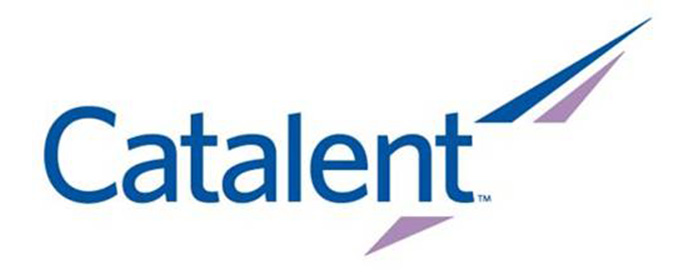
Catalent Biologics offers comprehensive standalone and integrated, CGMP compliant analytical services for traditional biologics and advanced modalities, including antibody-drug conjugates, cell and gene therapies and mRNA vaccines. From pre-clinical testing to post-approval release and stability, Catalent strives to develop analytical methods and implement innovative tools to support its partners.
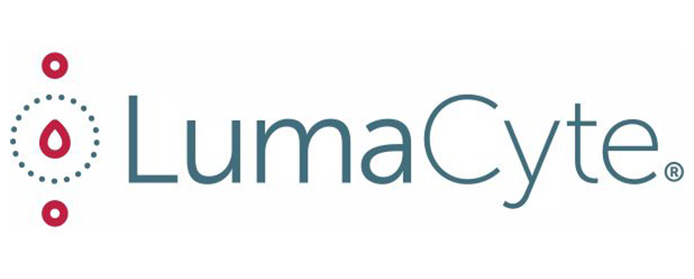
LumaCyteʼs advanced real-time bioanalytics platform, Radiance®, is a label-free, single cell approach for quantitative characterization of innate cellular responses, without the need for antibody or genetic labeling. This revolutionary technology utilizes Laser Force Cytology™ (LFC) to measure subtle phenotypic changes based purely on the intrinsic biophysical and biochemical properties of cells in response to their environment and/or treatment. Learn more at LumaCyte.com
Silver Exhibitors
Stegmann Systems, based near Frankfurt, Germany, is the company behind the successful PLA bioassay software and was founded in 1993. The software’s current version – PLA 3.0 – again set new standards in bioassay analysis. PLA is now in use in over 450 companies and organizations worldwide, including every Top 10 pharmaceutical and biotech company, as well as many research institutions, regulatory authorities and agencies.
Quantics is a biostatistical solutions provider for the bioscience and medical devices industries. Through our expert consultancy and QuBAS, our powerful bioassay software, we deliver rapid, guaranteed reliable results that make the most of every datapoint, helping clients to move rapidly through research and development to market approval.

Promega provides a broad portfolio of functional bioassays, immunoassays and protein characterization tools to accelerate your biologics drug discovery and development. We offer state-of-the-art reporter and health assays for potency testing, tools for antibody purification and mass spec analysis and a suite of products for simple and fast analyte detection using our Lumit™ luminescence technology. All of our products are developed and manufactured under rigorous quality standards and our bioassays are pre-qualified according to ICH guidelines. Learn more to help accelerate your research. Want a more personalized assay? Connect with us so we can help support your assay development.
Labcorp Biopharmaceutical CMC Services
Count on Labcorp Biopharmaceutical Chemistry, Manufacturing and Control (CMC) Services’ depth of analytical expertise to help you drive progress in your drug development journey. Highly skilled in characterization, formulation development, analytical development, as well as more routine quality control (QC) testing, our subject matter experts will partner with you to deftly advance your programs and help avoid common pitfalls across a broad range of modalities.
With more than three decades of CMC analytical experience and objective industry thought leadership insights, we can help you advance even your most challenging projects when it matters most. Located across three sites in the U.S. and U.K., we are ready to partner with you to help you achieve your next milestone.
Click here to learn more:
https://biopharma.labcorp.com/services/manufacturing-support.html
Virtual Exhibitors
FasTrain provides professional training for bio/pharmaceutical and biotech professionals. Our courses are designed to meet FDA, EMA and other regulatory agency training requirements. FasTrain hires experienced practicing professionals who have practical knowledge to teach their courses. The courses focus on solving your technical and regulatory problems and give you that edge needed to compete in the global market. Whether you are a small, medium or large company supporting commercial products or involved in early and late stage product development FasTrain offers training solutions to meet your needs. Save time and precious travel dollars and still get the best up-to-date training in the industry. Our 3- to 12-session courses are designed to give you all the information you need to get your job done.

